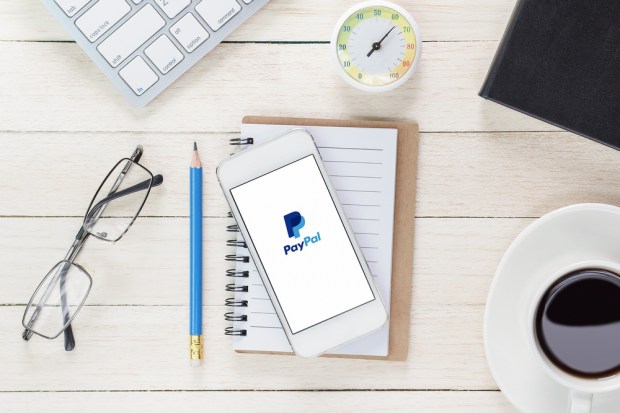How PayPal Won Big With One Touch

America is a “more is more” kind of place. The people that brought the world the cowboy cut ribeye, supersizing it, the 10-gallon hat and the McMansion are not known for going small. It is not our way.
Most of the time.
The exception to that seems to come up when the American consumer goes to shop online — especially when using a mobile device — when that supersized attitude of our forebears drops away and a sweet craving for simplicity rules the day.
Which, unfortunately, can hurt retailers, who have a tendency to overlook the American consumers’ basic desire for a smooth, end-to-end digital shopping transaction. Instead, they tend to cave to their inner “more is more” voice and start overstuffing the customer’s experience. As PYMNTS’ most recent Checkout Conversion Index demonstrates, consumers are shopping more digitally but actually converting and finishing those checkouts less and less. They seem to be screaming — through their checkout abandonment — “Yes, less is more, Mr. Retailer!”
And the reasoning is simple: The process is, in many cases, too crowded, too complicated and too friction-filled to inspire customers to really want to see it through to the end. Before the checkout, that “too much” comes in the form of requests for information, like emails, or marketing screens that try to sell possibly totally unrelated sale items to a consumer who is already there to buy something. At the point of checkout, the consumer faces having to enter in payment data, remembering a passcode or passing a “bot test.” And, more often than not, this leads them to go somewhere else that’s just easier to do business.
A problem that brand new comScore data released today seems to suggest that PayPal — with its One Touch checkout — has solved for its merchants. According to this comScore data, PayPal converts online buyers at a rate of 87.5 percent. The data is derived from its 1 million consumer panel’s eCommerce purchases at 15 retail domains selected by comScore that range from luxury retailers to electronics manufacturers to specialty retailers to discount sites. Any panelists making an online purchase at one of those sites using PayPal or “All Other” forms of payment were included.
PayPal’s 87.5 percent conversion compares to 51.1 percent rate for Visa Checkout and a 45.6 percent rate for “all other forms” of payment. Card-on-file was the most common “other” in this category.
“For us, it’s this validation of what we’ve been saying for a while,” PayPal Global Head of Product Communications Anuj Nayar told Karen Webster in a conversation shortly before the news broke. “You look at conversion rate, which is impressive, especially when you look at the sheer volume of what we see in the form of transactions. Last quarter, we did 15 million transactions a day.”
And that scale, Nayar noted, matters just as much as the conversion percentage alone because it actually gives a much clearer picture of the scope of One Touch’s accomplishment.
“We think that this is a validation of what we’ve been saying, which is One Touch is a revolutionary advance in online buying.”
Though Nayar also noted that, despite its total confidence in the product, even it was a little surprised by how powerfully favorable the comScore results were.
“When they came back with the data and it was like 87.5 percent, we were like wow, OK,” Nayar told Webster.
But though it was a little surprised, Nayar noted it was also far from shocked. It has been pretty clear since One Touch launched last summer across the Web and made buying with a single button tap easy for any PayPal user able to check a box that the product was clearly striking a chord with online shoppers looking for a readymade, tap-and-go solution from a very recognizable firm.
As part of this announcement, PayPal also released new numbers for One Touch penetration —now, some 21 million people in every market that PayPal serves.
“We are growing rapidly. Just this year, we were 15 million in January, 18 million in March and now we are 21 million in April. This is the fastest rollout of any product PayPal has ever had. What we see is that 87.5 percent is big. That means that when people see the PayPal button, they are clicking it.”
